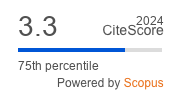Article | Open Access
The StoryMapper: Piloting a Traveling Placemaking Interface for Inclusion and Emplacement
| Views: | 1917 | | | Downloads: | 1102 |
Abstract: As aresponse to traditional (top‐down) urban planning processes, placemaking engages local citizens in the process of shaping the form, social activity, and meaning of places around them. However, placemaking practices similarly face political challenges regarding inclusion and emplacement. These challenges relate to who participates, facilitation through linguistic discourse, and place engagement itself. Attempting to address these challenges, this article (based on a pilot study) reports on the design and deployment of the StoryMapper, a traveling placemaking interface that uses a participant‐driven “chain of engagement” recruiting process to invite participants to create emplaced “morphings” (i.e., visually produced stories superimposed on public space) to spark dialogue on a digitally facilitated living map. This pilot study took place within a larger placemaking project that engages citizens to share their ideas regarding the reconversion of a community church. Plugging the Storymapper into this larger project, we discuss preliminary findings relating to the role of placemaking facilitators in citizen‐driven recruitment and the role of multimodality in placemaking processes. This pilot study suggests that inclusion should not only be evaluated based on who participates and who does not, but also on how the tool itself, in its capacity to engage participants to visualize complex emplaced ideas, may facilitate inclusion of different publics.
Keywords: citizen participation; cultural heritage; design; emplacement; inclusion; mapping; pilot study; placemaking
Supplementary Files:
Published:
© Hanne Vrebos, Paul Biedermann, Andrew Vande Moere, Koen Hermans, Karin Hannes. This is an open access article distributed under the terms of the Creative Commons Attribution 4.0 license (http://creativecommons.org/licenses/by/4.0), which permits any use, distribution, and reproduction of the work without further permission provided the original author(s) and source are credited.


